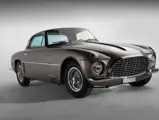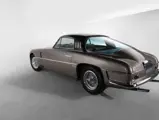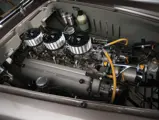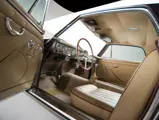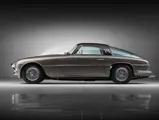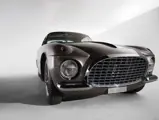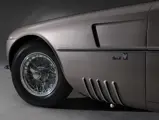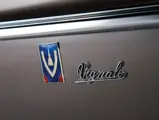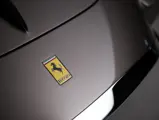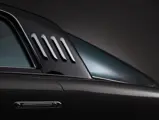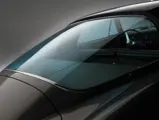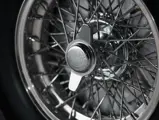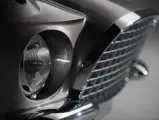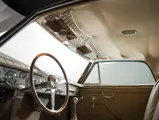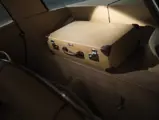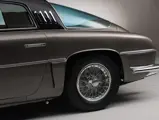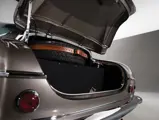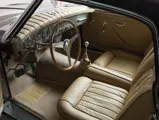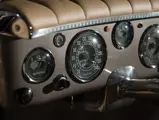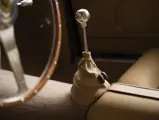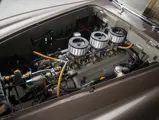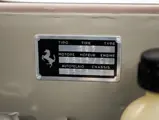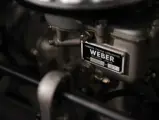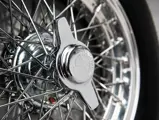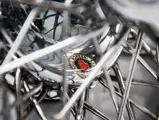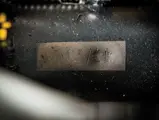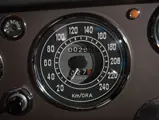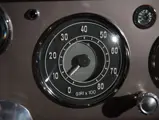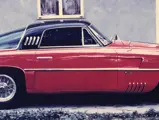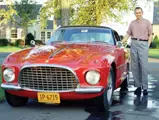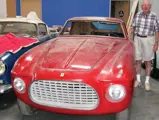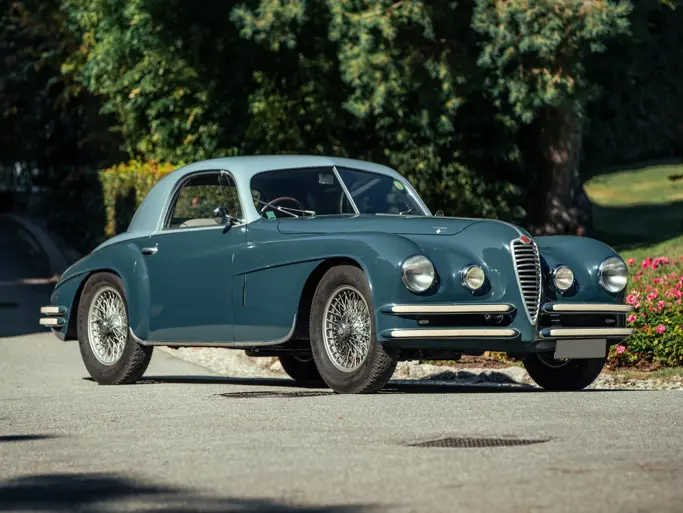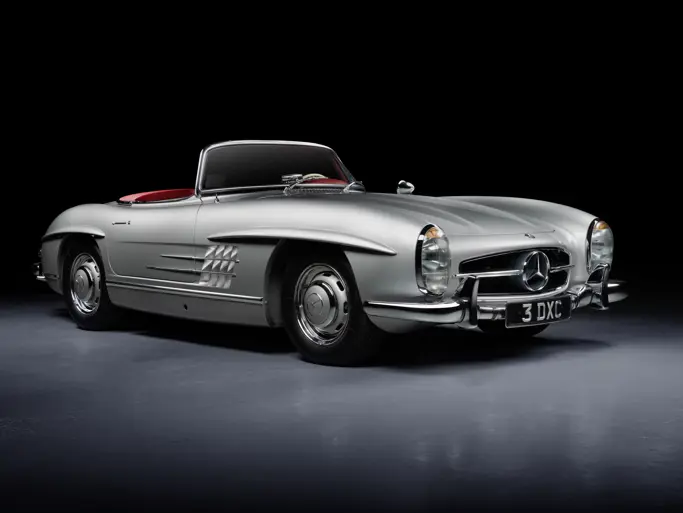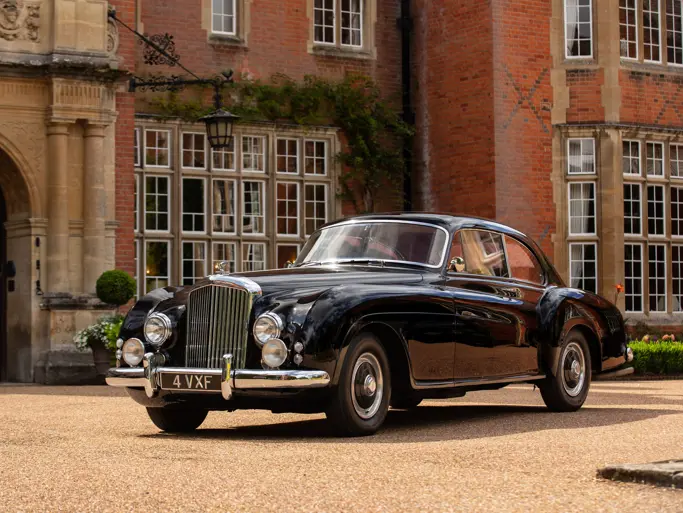New York - Driven By Disruption 2015
1953 Ferrari 250 Europa Coupe by Vignale
{{lr.item.text}}
$3,300,000 USD | Sold
 | New York, New York
| New York, New York
{{internetCurrentBid}}
{{internetTimeLeft}}

- Displayed at the 1954 World Motor Sports Show in New York
- An important one-off Vignale design on an early road-car chassis
- 2012 Villa d’Este and 2015 Cavallino Classic award winner
- Ferrari Classiche certified
200 bhp, 2,963 cc SOHC 60-degree V-12 engine with triple Weber 36 DCZ/3 carburetors, four-speed manual transmission, independent front suspension with double wishbones and double leaf springs, live rear axle with semi-elliptical springs and Houdaille shocks, and four-wheel hydraulic drum brakes. Wheelbase: 102 in.
FERRARI AND VIGNALE
In the marque’s early days, Enzo Ferrari was obsessed with finding the right “look” for his road cars in an effort to define his company from a visual standpoint. He courted a number of different coachbuilders who provided not only Ferrari with a number of different styles to choose from but also the customer. At the tail end of the era of the coachbuilt automobile, Ferraris could be swathed with bodies by a variety of European, primarily Italian, coachbuilders, allowing clients to commission their car to their own unique taste.
Opening their doors just one year after the conclusion of the Second World War, Carrozzeria Vignale of Turin was founded by its namesake, Alfredo Vignale, and his brothers, Guglielmo and Giuseppe. Crafting bodies for other manufacturers such as Cisitalia, Fiat, and Lancia, Vignale quickly earned a reputation for quality craftsmanship and innovative designs. Their reputation was further reinforced when Vignale teamed up with Giovanni Michelotti, one of the most celebrated designers of the time. Together, they would create a number of bold and impactful designs for Ferrari, all of which were handcrafted. Each body would be unique, with its own signature flair and bravado.
Outwardly, Vignale-bodied Ferraris are easily identifiable by their juxtaposition of sharp angles and rounded edges, with numerous louvers, air inlets, and other styling cues, including frequent use of two-tone paintwork. Some of these features were fitted simply for ornamentation, while others served a functional purpose. Regardless, Vignale’s designs differed greatly from those of their rival coachbuilders Pinin Farina, Ghia, and Touring, giving them a distinguished style all their own.
From the first Ferrari to wear Vignale coachwork in 1950 to the end of their relationship in 1954, the company had bodied over 150 different automobiles bearing the Cavallino Rampante. Today, these vehicles have become some of the most sought after and desirable Ferraris ever built due to their unique character and charisma. Vignale and Michelotti dared to be different and etched their names into automotive history with their bold designs.
CHASSIS NUMBER 0313 EU
Ferrari built just 22 of the 250 Europa before the introduction of the second-series 250 Europa GT in January 1955. Of these 22 examples, 18 were bodied by Pinin Farina with just four by Vignale, making them the most desirable of the series. The example presented here, chassis number 0313 EU, is the second such Vignale-bodied example built. Furthermore, after this car, only five additional road-going Ferraris would be fitted with Vignale coachwork, making it one of the last of its kind.
Chassis 0313 EU is an exemplary example of Vignale coachwork, exhibiting many of the characteristics for which both Vignale and Michelotti were known. The car’s headlights are inset into the front bumpers, which creates pronounced “eyebrows” above the headlights, and the front turn indicators are deeply recessed into the front wings. A chrome trim strip wraps around the bodywork from the front wheel arches toward the stern and around the trunk, emphasizing the length of the car. Furthermore, the vents just ahead of the doors and on the sail panels are accented with chrome.
Shipped to Luigi Chinetti Motors in New York City in December 1953, this car would be on the world stage a month later when it was displayed by Chinetti at the World Motor Sports Show at Madison Square Garden in January of 1954. By this time, the Ferrari was repainted red, allegedly at Chinetti's request, prior to the show. Following the show, the Ferrari was purchased by Mike Garber of Framingham, Massachusetts, for a price of $17,500. He kept the car for four years before selling it through Gaston Andrey to George H. Parker of Rome, New York, for $4,900 plus an Aston Martin in trade.
Thus, the car became Parker’s four-season daily driver and proved to be quite reliable over the following two years, leaving him stranded only once when a stretched timing chain needed to be replaced. In fact, Parker was married in March 1959, and he and his new bride immediately hit the road in his Vignale coupe, driving across the country to California for Mr. Parker’s new job. The first part of the trip went smoothly, but unfortunately by the end of the trip, the Ferrari was losing oil pressure and required a new gasket by the time they arrived in Los Angeles, where Mr. Parker replaced it himself.
The Ferrari was retained by the Parkers until they sold it in 1960 to Leonard Renick, a Cadillac dealer in Fullerton, California. He was obviously a man with a penchant for GM products because the original Lampredi engine was replaced with a supercharged Chevrolet V-8, a common engine swap at the time as correct Ferrari parts proved difficult to source. Furthermore, the car’s distinctive bumpers were removed along with its rear chrome trim, and its nose was repaired after a minor incident.
As of 1968, chassis 0313 EU was owned by Philip Stanton of Los Angeles, who sold the car to Ferrari of Los Gatos in 1976. It was purchased there later that year by Constantine Baksheef and Alec Sokoloff of Palo Alto. Sometime thereafter, the 250 Europa was taken off the road, but it would remain in California. It was discovered in 2003 by Tom Shaughnessy and sold six years later by him to Heinrich Kämpfer of Seengen, Switzerland, who immediately shipped the car to his homeland to be fully restored.
RETURN TO THE LIMELIGHT
No stranger to early Ferraris and with a well-regarded reputation for accurate, correct, and well-executed work, Kämpfer restored the car himself in Switzerland. Parts that had gone missing over the years, including various trim pieces, the bumpers, and the grille, were reproduced to exacting specifications. Kämpfer even sourced an ICI nitro-cellulose lacquer paint to refinish the car in Bruno Siena. Furthermore, Max Gimmel AG in Arbon, Switzerland, the very same company that produced the original leather for the car in 1953, was commissioned to reproduce the interior. Even the Wilton wool carpeting was shaved down from 9 millimeters to 5.5 millimeters in thickness to be as accurate as possible. During this time, the engine, number 0331 EU, was found to be largely complete, though the block was found to be beyond repair. As such, a new block was cast by Ferrari Classiche, and that engine was fitted to a gearbox of the correct type.
By the end of the restoration in October 2011, it was estimated that Kämpfer spent 3,000 hours of work on the car with an additional 800 hours completed by outside specialists. Reflecting the restoration’s overall attention to detail, the Ferrari is accompanied by an incredible file, detailing not only the history and restoration of the car but also containing samples of the paint, leather, and carpet, as well as original screws, nuts, bolts, and clamps found on the car when it was disassembled prior to the restoration. The car’s first public outing was at the Concorso d’Eleganza Villa d’Este in 2012, where it was awarded the Trofeo Foglizzi for best interior design. The restoration of the car was further lauded in issue 194 of Cavallino magazine, where Alan Boe authored an 11-page color feature about this car, its history, and the restoration.
Subsequently, the Vignale coupe was purchased by Tom Peck of Orange County, California, in 2013. During his tenure, the car was shown at the 60 Years of Ferrari celebration on Rodeo Drive in Beverly Hills in October 2014 and further profiled in the November 2014 issue of Automobile magazine. Following it showing at the 2015 Cavallino Classic, where it was awarded Platinum and the Ferrari Classiche Cup for most outstanding factory-certified Ferrari, chassis number 0313 EU was purchased by its current custodian. Today, it remains just as beautiful as it was the day it left Vignale’s facilities and is a highly compelling example from Ferrari’s coachbuilt era.
While the designs of Pinin Farina ended up winning over Enzo’s heart, forever associating that coachbuilder with Ferrari going forward, it is the designs of Vignale that peak the curiosity of collectors, enthusiasts, and historians the most. The partnership between Ferrari and Vignale was seemingly short yet was highly influential and important to the marque’s history and design language, making those cars incredibly desirable today. Returning to the Empire State for the first time in nearly 60 years, chassis 0313 EU presents as well today as when it was first on display at Madison Square Garden in 1954.

